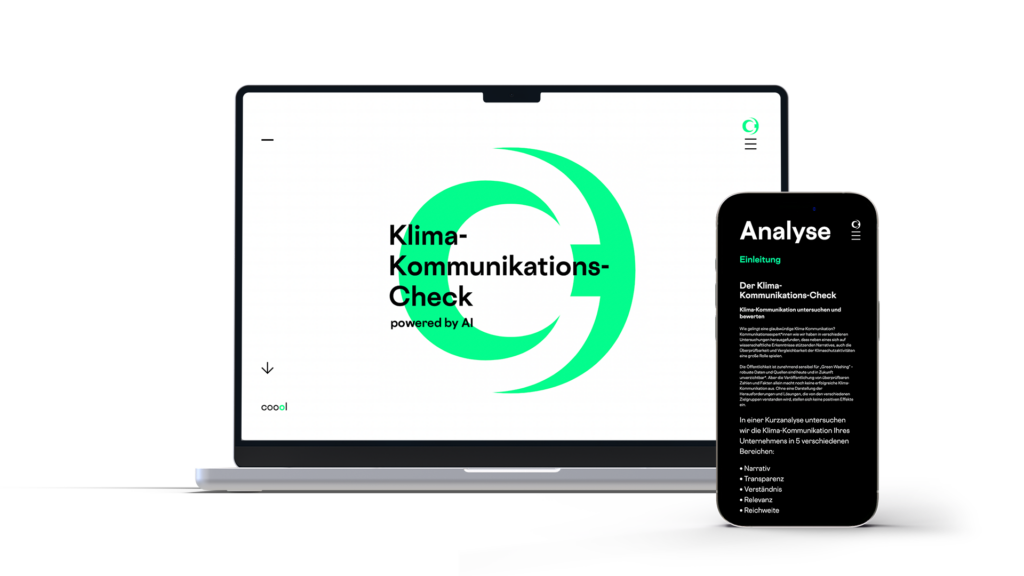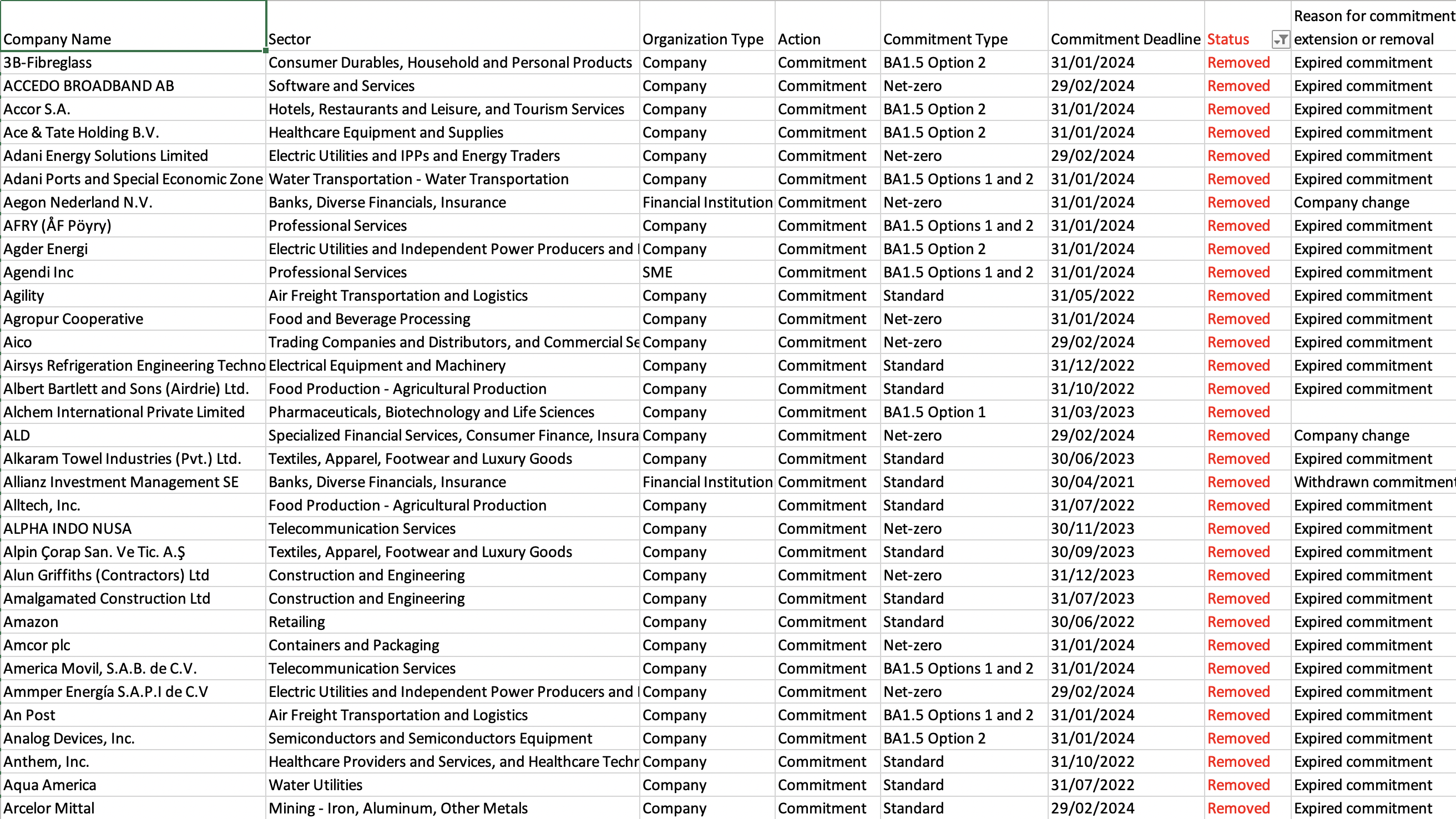The Science Based Targets Initiative (SBTi) is now one of the most recognized validators of a scientific climate target for companies. It recently withdrew commitment status from over 200 companies, including the likes of Microsoft, Procter & Gamble, Unilever and Walmart, with a combined market capitalization of 4 trillion (1). What does this mean – from a communications perspective?
The reason for the downgrading is a policy of the SBTi to withdraw status if companies do not submit and have validated targets within 24 months of their commitment. Targets are defined by the SBTi as climate transition pathways consistent with the Paris Agreement. They are categorized as 1.5°C, well below 2°C, or 2°C compatible. These pathways provide for absolute emission reductions from a reference point, the baseline.
The companies emphasize that they remain committed to their ambitious plans. What is the communicative effect of all this?
First of all, I notice surprisingly little response. Then comes the accusation of greenwashing, that these goals are pointless anyway, or criticism of the SBTi’s approach. In this case specifically and with regard to climate commitments in general. (2)
For the German companies, names such as Allianz Investment, Drees & Sommer, Lufthansa, s. Oliver, Viessmann, Zentis, ZF (extract) come up.
In fact, around 88% of global emissions and 92% of GDP are currently under net zero pledges (3). The quality of these claims is demonstrated by comparing these net zero pledges with the criteria of the UNFCCC Race to Zero campaign through zerotracker.net (4): 4%. These stipulate:
- Set a specific net-zero commitment (by 2050 for companies in OECD countries)
- Include all greenhouse gases (in the case of companies, all scopes)
- Clarify the conditions for the use of offsets
- Publish a plan for how they intend to achieve their interim and long-term targets
- Implement an immediate measure to fulfill
- Publish annual progress reports on both the achievement of the targets and the measures taken
“Several recent analyses have highlighted the lack of coverage of Scope 3 emissions and the unregulated use of offsets as key issues that undermine the integrity of companies’ net-zero targets (Day et al., 2023b), which is why they became part of the Race to Zero campaign’s launch criteria from June 2022 (Race to Zero, 2022a).”
(zerotracker.net (3))
One challenge of the SBTi criteria is that, as I understand it, they provide for a fixed emissions reduction line. This means that they cannot be used to respond to economic dynamics in a multi-crisis scenario such as the current one, or to growth. A smarter approach is to work with an emissions budget in relation to economic output, which can be used to time measures to better economic effect. However, it is also common sense that it is much more difficult to catch up on progress at a later point in time than it is to realize it earlier.
Are net zero claims and a correspondingly open climate communication increasingly risky and becoming a boomerang?
Not from my perspective, if you consider the following strategies:
- Creating understanding: Sustainability management and communication should work together closely and develop an understanding of the facts on which communication is based and the risks involved.
- Build a solid transitory narrative. Put simply: where do we come from, where do we want to go, why, how and what are we doing to make our business model independent of climate-damaging emissions. In contrast to a green narrative that pretends to be more than you are (e.g. “climate neutral” based on compensation).
- Ambitions are not wrong, they must continue to be high: without ambitious goals, there is no progress. They are necessary to build momentum and accountability within the company.
- challenges along the way: A company that talks authentically about successes and failures has a much better chance of building trust in the long term. Real stories of success instead of flat success stories and green uniformity.
- No more time for freestyle: Invest in good communication and, before that, in good standards, processes and data. Ensure the argumentation is watertight.
- Make the creation of positive value (both tangible and intangible) tangible and relate it to the status quo.
- Engagement: Show stakeholders how they can be part of the solution.
All of this requires courage and should not minimize the real danger of greenwashing accusations. The Green Claims Directive and other legislation such as the ECGT Directive are sharp swords. Critical stakeholders will not hesitate to take them up. Climate lawsuits are on the rise, and we know from the financial sector how expensive a false statement can be (e.g. the recent judgment against Apple for a possible false statement by CEO Tim Cook on the revenue forecast, with a possible fine of $490 million).
A brief digression on the subject of challenges: I recently referred to the book “How the World Really Works” by Vaclav Smil (5). It shows how heavily our industrial societies depend on fossil raw materials and how difficult the path to decoupling is. To cite just one example: without the supply of ammonia-based fertilizers to agriculture, obtained from natural gas, it would hardly be able to feed more than half of the world’s population. The transition to fossil-free agriculture is possible, but the road ahead is extremely rocky, even without discussing agricultural diesel.
What is the point of 1.5°C climate targets if we may no longer be able to achieve them anyway?
The argument is often heard that it makes no sense to set 1.5°C targets when global warming is already approaching 1.5°C and the targets hardly seem achievable. I see this completely differently in terms of communication, because the higher the temperature reality is, the better positioned companies are that have been shown to be below it in their climate impact. Perhaps at some point they will be the safe harbor for consumers, professionals and investors. Accepted, loved, future-proof.
Conclusion
Companies and brands that have built a solid narrative and credible, transparent communication around their position, plans and challenges can deal with backlashes like the SBTi removals constructively and in a way that builds trust. Those who approach this sloppily, carelessly or with actual greenwashing intent expose themselves to high communicative risks. There are great opportunities in honest reflection, because in the best case scenario it will lead to companies intensifying their efforts, drawing up appropriate plans, directing money in the right direction and thus bringing about real, value-adding change.
Climate Communication matters.
Climate is not just one of many topics in the sustainability spectrum: it is central, existential. It is worth giving it the importance it deserves.
If you want to improve your climate communication, are wondering where your company currently stands and where there are possible starting points, then the climate communication check is highly recommended. Incidentally, it is ideally suited to address point 1, namely to bring sustainability management and communication together.

Source
(1) https://sciencebasedtargets.org/target-dashboard
(3) https://zerotracker.net/analysis/net-zero-stocktake-2023)
(5) https://www.chbeck.de/smil-welt-wirklich-funktioniert/product/34659705
